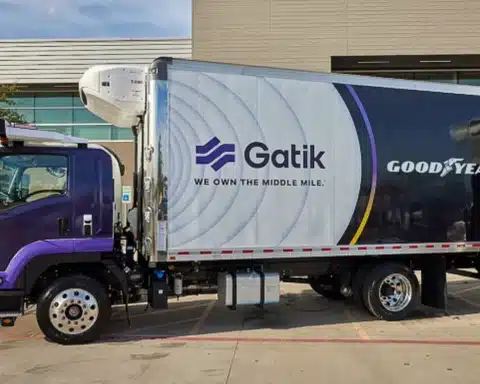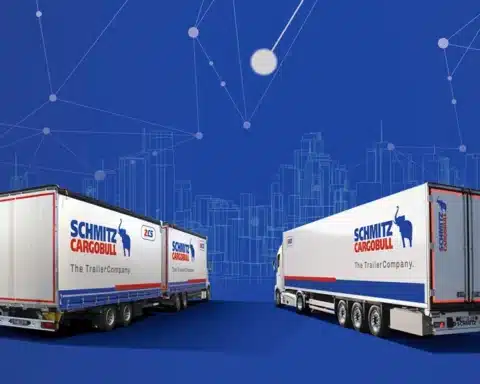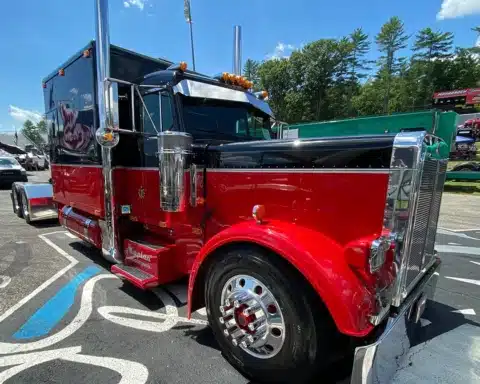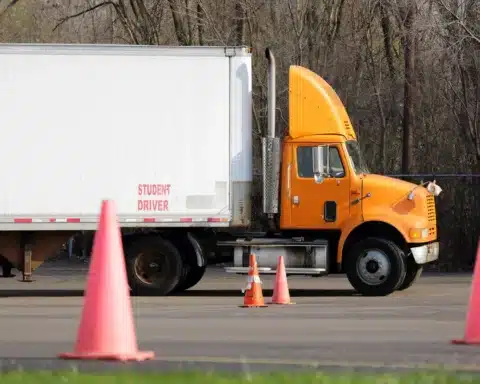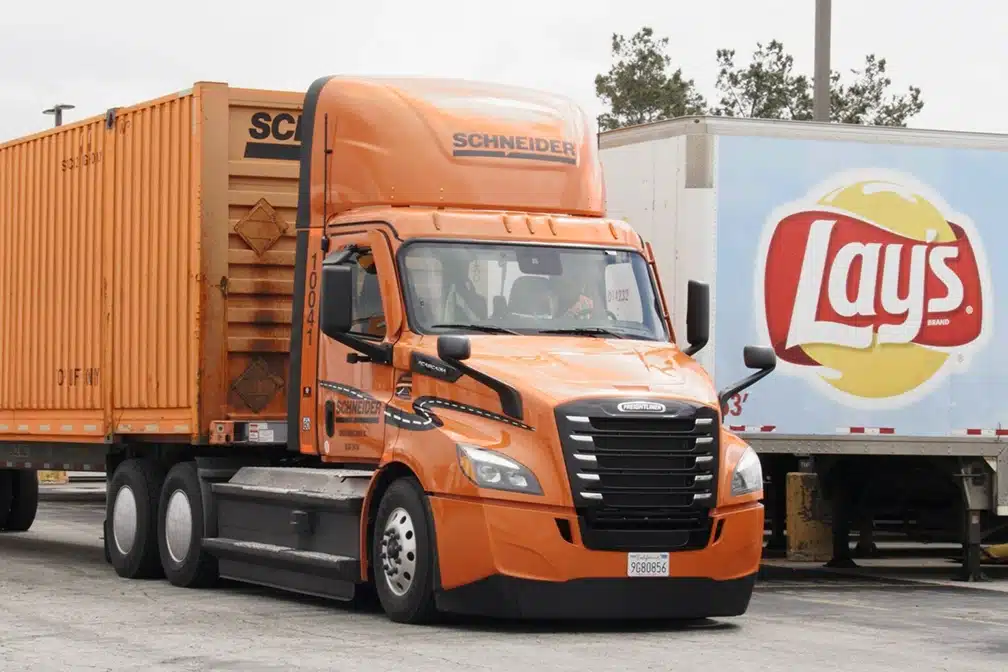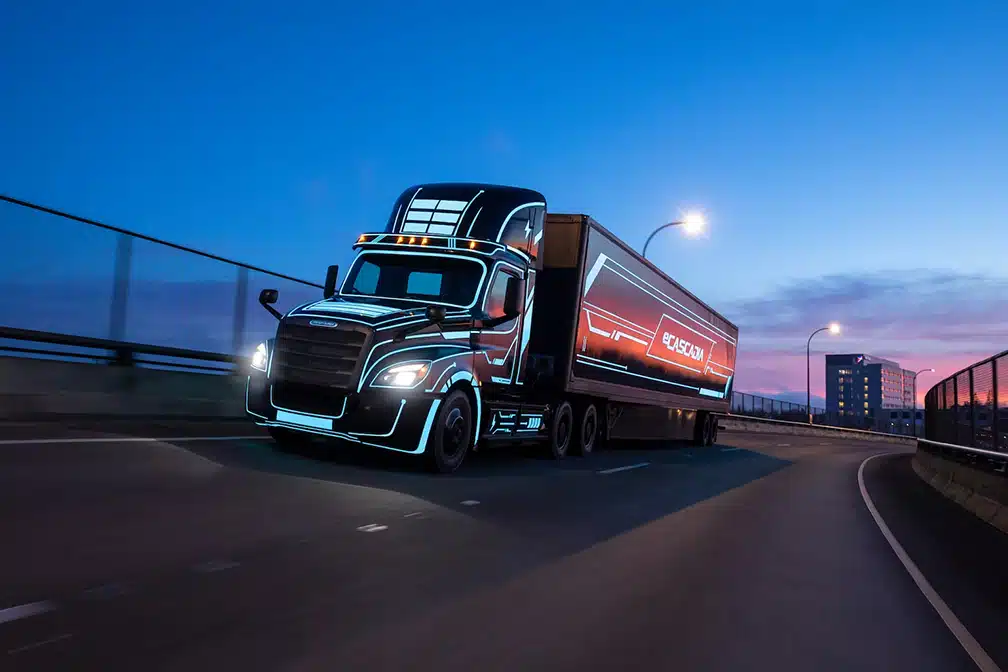Does Gamification Technology work to Engage Drivers?
Boosting Truck Driver Engagement and Efficiency Through Gamification Strategies
The trucking industry is currently on the brink of a significant transformation, thanks to the integration of gamification in trucking strategies aimed at enhancing driver engagement, efficiency, and safety. This article delves into the myriad benefits of applying gamification in trucking, exploring its potential to not only make the work more engaging for drivers but to also foster a culture of continuous improvement and competitiveness, which, in turn, can lead to safer roads, reduced operational costs, and a more sustainable environment.
Here are some ways in which gamification can be integrated into the technology used in semi trucks:
- Monitoring Performance: One approach involves tracking driver performance through sensors and other tools. For instance, sensors can be placed in the truck to monitor aspects, like speed, acceleration, braking, and more. This data can then be used to generate a scorecard or dashboard showing the driver’s performance in time.
- Rewards and Incentives: Gamification can also entail offering rewards and incentives to drivers who achieve performance targets. For example, drivers maintaining a fuel efficiency level or avoiding accidents could earn points, badges, or prizes.
- Interactive Feedback: Another aspect is providing feedback to drivers instantly. A dashboard might show messages or animations encouraging drivers to adopt fuel-driving practices or steer clear of distractions.
- Competition Element: Gamification may include fostering a spirit among drivers by ranking them on leaderboards based on their performance or engaging them in challenges and tournaments.
- Training Opportunities: Additionally gamification can serve as a tool, for delivering training and educational content to drivers.
For instance, using simulations or games can help educate drivers on how to handle driving situations or adapt to technologies.
Advantages
Enhanced driver engagement: Making driving interactive and enjoyable through gamification can boost driver interest and enjoyment leading to increased motivation and efficiency while reducing turnover rates.
Enhanced safety: By incorporating game elements drivers can be motivated to practice driving habits like reducing speed avoiding distractions and obeying traffic rules. This could result in accidents and injuries, on the road.
Improved fuel efficiency: Gamification can encourage drivers to adopt fuel-saving practices such as acceleration maintaining a steady speed and avoiding unnecessary idling. This could lower fuel expenses and lessen environmental impact.
Data monitoring and analysis: Gamification offers insights into driver behavior like fuel usage, speed patterns, and distance covered. Such data can pinpoint areas for enhancement and optimize performance.
Disadvantages
Cost implication: The integration of gamification in truck technology may involve considerable costs due to the need, for specialized software and hardware development.
Complexity concerns: Implementing gamification may require extensive training for drivers to comprehend its intricacies effectively.
It might pose a challenge, for drivers accustomed to ways of managing performance.
Distraction Concerns: Gamification could serve as a distraction for drivers if not carefully crafted. If drivers become overly engrossed in meeting game objectives they might not allocate focus to the road.
Limited Scope: While gamification can positively impact driver behavior it alone may not address all the industry challenges like driver shortages and high turnover rates faced by the trucking sector.
Application of Gamification in Semi-Truck Technology
Enhancing Driver Training and Skill Development: A key advantage of integrating gamification into truck technology lies in its potential to elevate driver training and skill enhancement. Through training simulations, drivers can practice maneuvers, and navigation skills and handle hazardous scenarios in a secure virtual setting. Offering feedback progress monitoring and rewards for milestones achieved motivates drivers to refine their skills constantly. This leads to enhanced road safety. Decreased fuel consumption over time.
Fuel Economy and Friendly Driving Practices: Gamification plays a role, in promoting fuel efficiency and eco-friendly driving practices within the trucking industry. By using systems drivers can get feedback on their driving habits, like speed, acceleration, and braking techniques. By promoting fuel driving practices, such as maintaining a speed and avoiding aggressive maneuvers gamification encourages drivers to embrace eco-friendly driving behaviors. This not only cuts down on fuel usage and greenhouse gas emissions. Also reduces costs for fleet operators.
Focus on Safety and Risk Management: Safety is a priority in the trucking sector. Gamification can significantly contribute to encouraging driving behaviors and minimizing risks. Through features like leaderboards, achievements, and rewards for following safety guidelines drivers can be incentivized to prioritize safety. Moreover interactive hazard recognition training programs with elements can enhance drivers’ awareness of surroundings quicken their response times, and improve decision-making skills in challenging road situations. Consequently, this could enhance safety standards across the industry. Leading to accidents and injuries.
Proactive Maintenance and Monitoring Systems: Gamification strategies can also be implemented for the maintenance and monitoring of semi-trucks. By utilizing sensors and data analysis tools gamified systems can monitor vehicle metrics such, as engine performance, tire pressure levels, and fluid statuses.
Drivers can get notifications and alerts when it is time, for maintenance or if any potential issues are detected. Adding fun elements like progress bars, achievement badges and rewards for keeping up with maintenance can encourage drivers to stick to their schedules and deal with problems promptly. This proactive approach not only lowers the chances of breakdowns but also improves the lifespan and uptime of vehicles.
For Fleet Management and Optimization: Introducing gamification into fleet management systems can boost efficiency and driver performance. Gamified dashboards can offer real-time insights into driver performance, fuel usage, and maintenance plans to fleet managers. This enables them to make informed decisions and take targeted actions like providing training or rewards to top-performing drivers. Moreover organizing gamified competitions and challenges among drivers can foster a spirit of competition and teamwork leading to increased morale and productivity across the fleet.
While gamification in truck technology holds great potential it’s essential to address a few challenges and constraints. Importantly gamified systems need to strike a balance, between engaging users without creating distractions that could jeopardize driver safety. Ensuring that game elements don’t divert driver’s attention from the road is crucial.
Moreover, successful integration of gamification relies on teamwork, among stakeholders, such as truck manufacturers, fleet managers, and drivers themselves. Effective training programs, crafted gamified modules, and user-friendly interfaces play a role in maximizing the advantages of gamification.
It’s important to understand that while gamification can enhance the skills and performance of truck drivers it should not be a substitute for their expertise and experience. Rather it should be viewed as a tool that complements their abilities. The human touch remains essential for making decisions and adapting to circumstances while driving.
Conclusion
The final thoughts on implementing gamification in truck technology suggest its potential to transform the industry. By incorporating game elements into driver training, fuel efficiency practices, safety measures, maintenance routines, and fleet management processes gamification can drive innovation enhance efficiency, and encourage sustainable practices. Through implementation strategies collaboration efforts, among stakeholders, and prioritizing safety considerations, gamification holds the promise of shaping the future of truck technology for the benefit of drivers, fleet owners, and the entire industry.
STAFF CONTRIBUTIONS
Exploring the Pros and Cons of Renewable Diesel and Its Potential for Cleaner, Greener Options for the Trucking Industry.
MoreGoodyear's Smart Tires Enhance the Safety and Efficiency of Gatik Autonomous Trucks, Their Unique Partnership Aims to Revolutionize the Trucking Industry.
MoreRevolutionary, Fuel-saving Transport Refrigeration Unit Technology (TRU Tech) and Eco-Friendly Solutions: A Game-Changer for Over-the-Road Truckers.
MoreADDITIONAL NEWS
Trucking Topics
all →States challenge new emission rule affecting trucking; this lawsuit involving more than twenty US States questions federal authority.
MorePennsylvania-based Arien Ruell's 1993 Peterbilt 379, affectionately known as "Ten Dimes," is not just a piece of machinery; it's a symbol of love, family,
MoreIn December 2023, Florida asked for a change in the CDL testing process. After consideration and a request for public comment, the FMCSA has
MoreIn a move that has sent shockwaves throughout the trucking industry, the National Owner Operators Association (NOOA) recently declared a nationwide truckers' shutdown. The
MoreFinCEN New Reporting Requirement: What Truckers Need to Know In the world of trucking, staying on top of news and regulations is crucial. While
More


